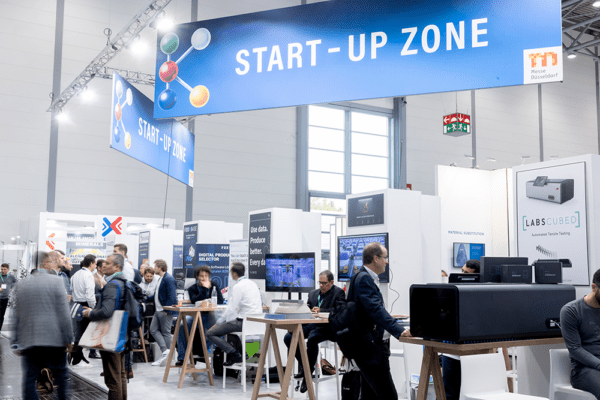
LATI3Dlab Introduces Unique Recycled Polycarbonate Material for 3D Printing
Tiziano Vudafieri of Vudafieri Saverino Partners has created the Wilhelm Lamp, a unique light fixture and tribute to Wilhelm Wagenfeld. The Wilhelm Lamp reinterprets Wagenfeld’s modernist glass vase as an enlarged pendant lamp that is 3D printed from recycled polycarbonate developed by LATI3Dlab.
LATI3Dlab is the LATI division created for the development of specific technical compounds (FFF and FDM) for additive manufacturing (AM). The AM compounds engineered by LATI3Dlab are purposely formulated to ensure optimum processability in 3D printing and offer unique functional properties.
Gimac is a manufacturer of machines and plants for extrusion and microextrusion in Castronno (VA). Vudafieri Saverino Partners is an architecture and interior design atelier based in Milan and Shanghai.
In 2019, Tiziano Vudafieri used a plastic material from LATI3Dlab to create his Wilhelm Lamp, a large pendant lamp inspired by a vase designed in 1935 by the modernist architect Wilhelm Wagenfeld, of whom Vudafieri is a collector.
The unique piece is produced by eXgineering SA with Gimac technology, by means of special 3D printers for technopolymers in granule, and was presented within the context of the event ‘Guiltless Plastic – Master’s Pieces.’
An important distinguishing factor of its creation was the use of transparent polycarbonate coming exclusively from recycled material. LATI also optimised the selected polymer to maximise its final properties after a transformation through 3D printing while preserving its transparency, resilience, dimensional stability, and aesthetic appearance.
LATI3Dlab, Vudafieri Saverino Partners and Gimac are now beginning work on further masterpieces strictly using recycled materials. This project will include a set of lamps installed at the Paradiso Cannes, a restaurant in the Barrière hotel in Cannes, and at Paradiso restaurant in Abu Dhabi.
The material used is LATIECO 87 MR AM, a polycarbonate from mechanical recycling, chosen and developed by LATI3Dlab and then transformed by eXgineering, using Gimac additive technology, into the shapes the architects conceived. Geometries similar to those of veils and flames moved by the wind, dear to the masters of blown and handcrafted glass, which are impossible to achieve using injection moulded plastics.
With 3D printing, or rather, thanks to additive technology, in this case, Robotic Additive Moulding (RAM), even the most daring evolutions take shape thanks to the extreme freedom of expression guaranteed by this six-axis process, capable of preserving the chemical-physical properties of the material, conditioning its microstructural properties, thus acting as a closed-loop between material and design.
Lightweight, colourful and elegant, the lamps are intended to display what is now technologically possible by combining modern production methods, materials expertise, Italian artistic design and, above all, respect for the environment in accordance with the principles of sustainability.
Click here to learn more about LATI3Dlab materials for 3D printing.

LATI
+44 (0) 1270 501713
Website
Email





